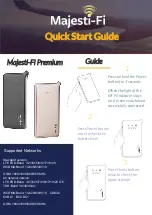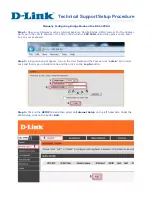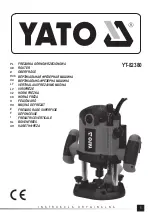
User Manual
Aolynk DR814Q ADSL2+ Broadband Router
5 Advanced Configuration
41
Table 5-1
Description of commonly used ATM service types
Service type
Description
UBR
(unspecified
bit rate)
Suitable for services that are not real-time-critical and with large
burst traffic. UBR demands best-effect services on the network
side. When applying for services, you are not required to set QoS
parameters except for PCR, which limits the upper rate. The
network side does not guarantee QoS for UBR services. UBR cells
will be discarded first in a network congestion. Error correction is
carried out by upper-layer protocols. Typical applications are FTP
and E-mail.
CBR
(constant bit
rate)
Suitable for services that require static bandwidth and demand the
highest priority. This type of service can provide stable traffic with
the minimum burst. Only PCR parameter is needed for CBR
service application. The source can transmit cells at a negotiated
PCR or a rate lower than it. Typical applications are circuit and
emulated voice.
VBR-rt
(real-time
variable bit
rate)
Sensitive to delay and jitter of data flow. Similar to CBR except that
they are delay- and jitter-sensitive. VBR-rt services allow limited
burst. The transmission rate on source side can be different at
different time. The parameters required for VBR-rt service
application include PCR, SCR, and MBS or BT. Typical VBR-rt
applications are voice, interactive video services and IPTV.
VBR
(non-real-time
variable bit
rate)
Suitable for bursting non-real-time services. Compared to VBR-rt,
a distinct feature of VBR services is that demands of real-time are
not so crucial, and the priority for service data processed on the
network side is also lower than that of VBR-tithe parameters
required by VBR services include PCR, SCR, and MBS (or BT), the
same as that of VBR-rt.
Keep the default value unchanged for those options unrelated to the configuration. As
shown in Figure 5-5, if the VBR-rt option is selected from the ATM Traffic Class
drop-down list, you need to set values for Peak Cell Rate, Max Burst Size, and
Sustainable Cell Rate and leave
0
in the Burst Tolerance and Minimum Cell Rate text
boxes.
An example is taken to explain how to configure ATM QoS parameters.
Suppose that:
The actual upstream rate of ADSL is 896 Kbps, and two PVCs (PVC1 and PVC2) are
configured on a single ADSL line. PVC1 is used for network access, with not much
real-time requirement. PVC2 is used for real-time video conferencing, requiring a least
upstream/downstream rate of 384 Kbps.
Analysis:
A total upstream rate of 896 Kbps is configured for PVC1 and PVC2. Audio and video
services carried out over them may be interfered. For example, an uploading service,
which consumes a bandwidth larger than 500 Kbps, bursts on PVC1 when a video
















































